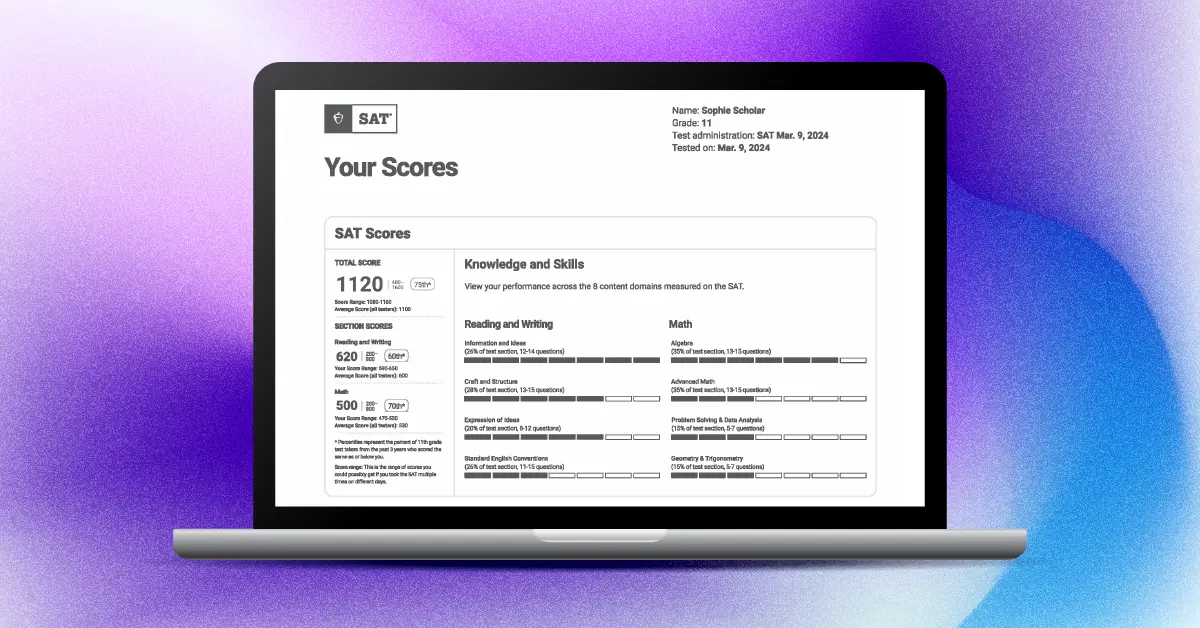The SAT® math test encompasses a lot of math concepts that you have learned in your high school career, but don’t let that overwhelm you! Just like your high school classes, the SAT breaks down the possible concepts tested into sections. Let’s take a look at what type of geometry questions might be asked on your next SAT exam.
Before breaking down the geometry that the SAT covers, let’s talk about a few general things. . .
First of all, there typically isn’t a lot of geometry on the SAT! In fact, the SAT study guide mentions that there are only 6 “Additional Topics in Math” questions on the entire Math portion (non-calculator and calculator) on any given test. The “Additional Topics in Math” section includes geometry, trigonometry, and complex numbers.
Another important thing to note about the geometry on the SAT is that the SAT provides a reference sheet (page 4 of SAT study guide) at the beginning of both the non-calculator and calculator sections. There are some helpful formulas provided, but some of these formulas are rarely tested. Rather than relying on the given reference sheet to excel on the SAT geometry questions, it is important to understand what is asked and practice questions in advance to become familiar with how geometry is tested on the SAT!
Area and Volume
You might notice that the reference sheet includes a few area and volume formulas, but it’s imperative that you understand how and when to apply these formulas. Make sure you are able to identify and use each of the area and volume equations and be able to manipulate the equations to solve for different pieces. These questions can be asked in numerous ways, so be familiar with these questions before taking the test and you’ll be able to tackle any that come your way!
Lines, Angles, and Triangles
The geometry questions might also include lines, angles, and triangles. You should be able to find the midpoint or distance of two points on a line segment. For angles, you should be able to find their measures using different theorems (such as the vertical angle theorem) between lines. Don’t forget that angle measures on a straight line add up to 180°! You may also be asked for angle measures or side lengths of a triangle (isosceles, equilateral, right). It is important to know the properties and theorems of angles in a triangle as well as the properties and theorems of triangles and other polygons.
Trigonometry
Right triangles can be seen on the SAT as well. You should be able to apply and use the results of the Pythagorean theorem with right triangles and understand trigonometric ratios. With this knowledge, you should be able to find the side lengths or other unknown values. You may also be asked to determine angle measures using cos, sine, etc. in a triangle or polygon. You should practice each of these concepts to be aware of the extent that the SAT tests them.
Circles
Circles may be tested on the SAT as well. From your classes, you might remember that radius and diameter are components of different formulas and equations (like circumference and area). Make sure you are well versed in what these things are and how you can use them. Be familiar with central angles and inscribed angles in a circle as well as how to calculate arc length. There may even be a question about tangents or chords of a circle. For circles in the xy-plane, make sure you know the equation for a circle and understand how changes to the graph of a circle affect its equation as well as how to manipulate the equation. Practicing circle questions will allow you to become familiar with circles on the SAT.
The SAT geometry questions come in many shapes and sizes! Some questions will require multiple steps or levels of understanding. Also, the SAT might give you an image to use for the question or might give you information without an image where it is best to sketch one for yourself. Understanding when and how to gather and use the information in each geometry question comes from practicing the different question types and reviewing the necessary theorems and formulas (even the ones not included on the given reference sheet).
Understanding the types of geometry questions that are asked can help improve your SAT score, even though it is a small portion of the test. The best method to become familiar with the geometry on the SAT is to practice! UWorld allows you to practice questions that will help you excel in geometry and all other sections on the SAT!




